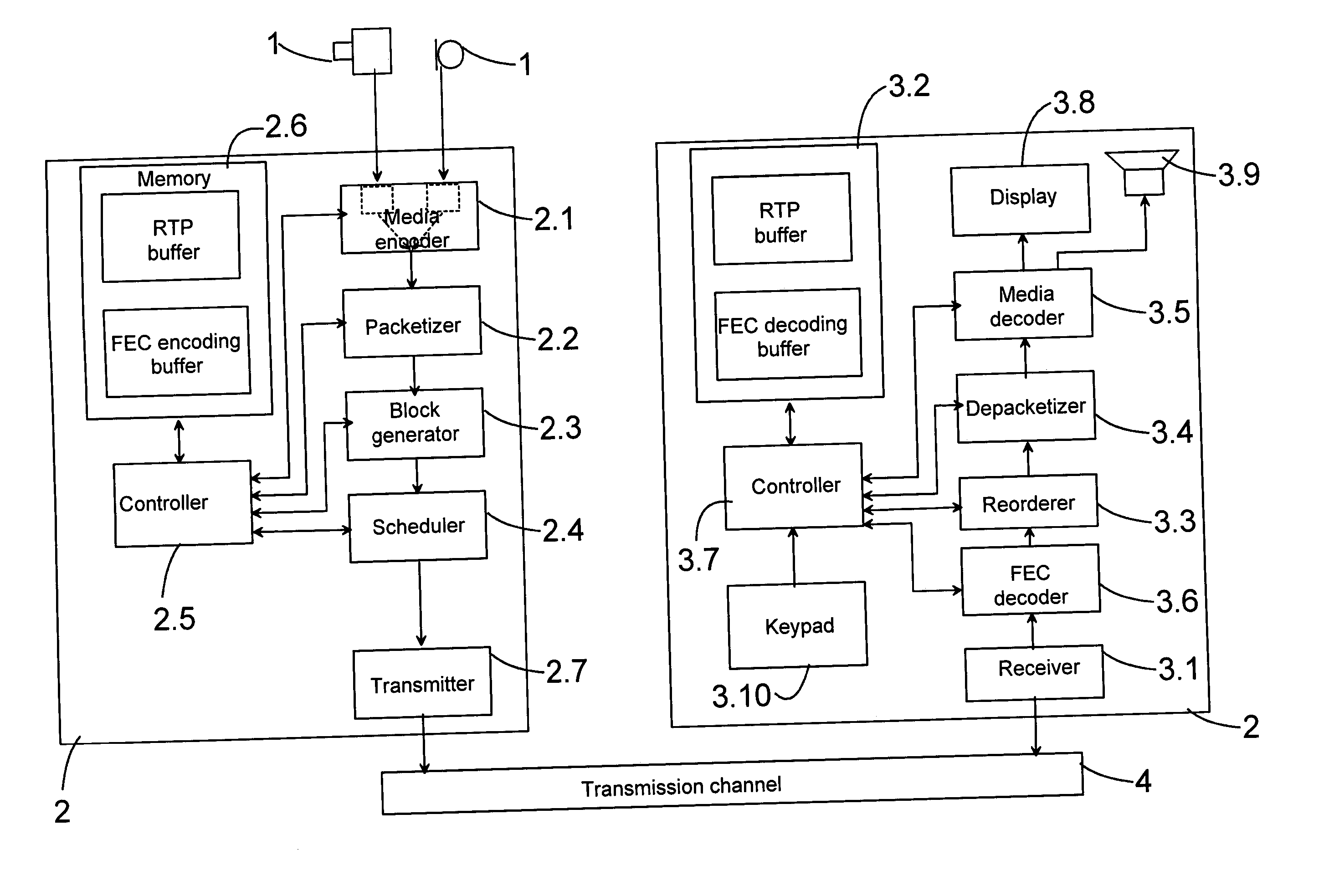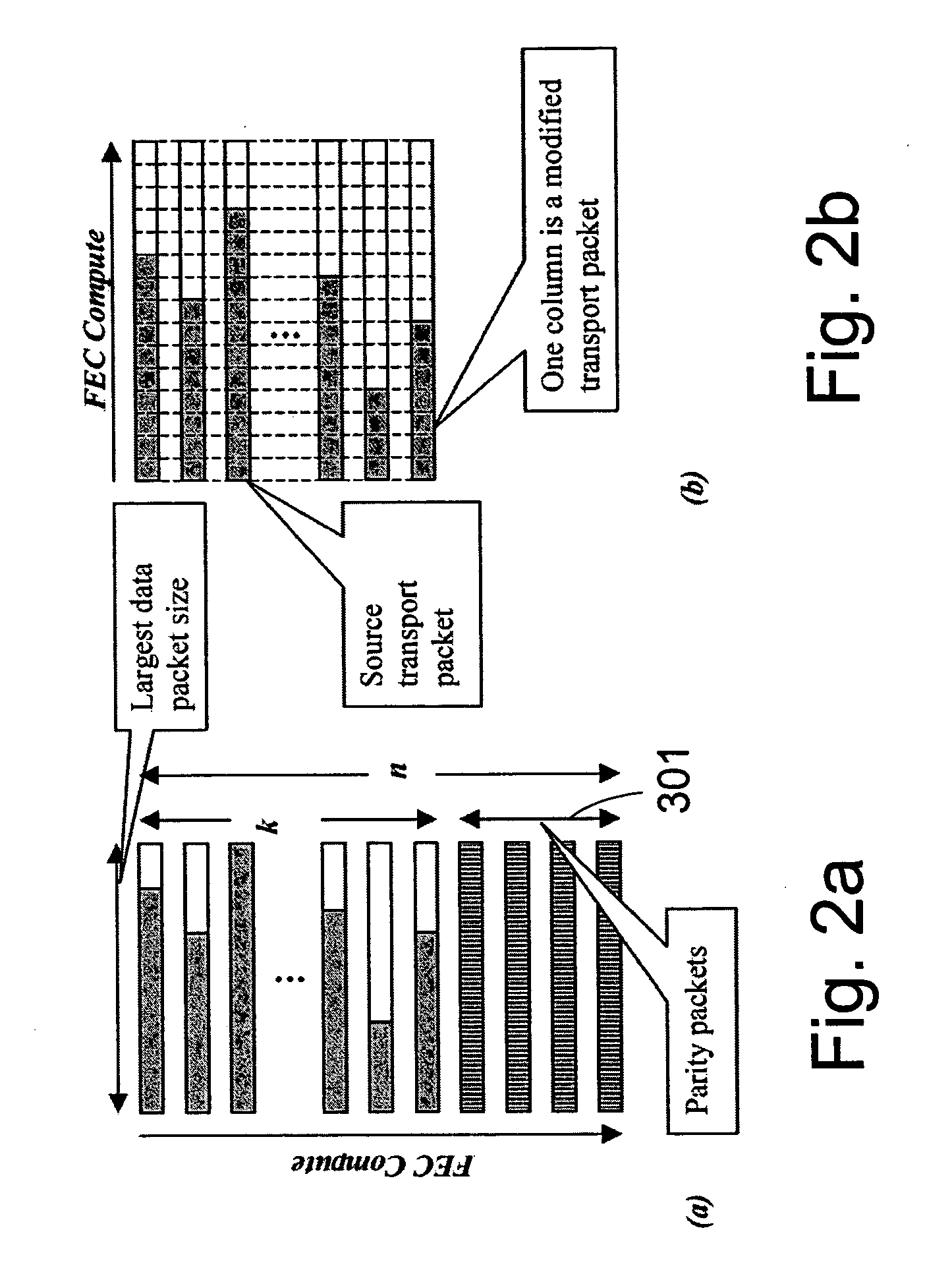Packet stream arrangement in multimedia transmission
a multimedia transmission and packet stream technology, applied in the field of transmission of coded media packets, can solve the problems of affecting the quality of transmission on most packet networks, for example ip networks, affecting the transmission quality, so as to reduce the impact of transmission errors, reduce the tune-in delay, and reduce the effect of transmission error protection
- Summary
- Abstract
- Description
- Claims
- Application Information
AI Technical Summary
Benefits of technology
Problems solved by technology
Method used
Image
Examples
Embodiment Construction
[0066] In FIG. 5 there is depicted an example of a system according to the present invention. The system comprises one or more media sources 1, such as video, audio and / or data sources. The media from the media source 1 is transferred to a transmitting device 2 comprising an encoder 2.1 for encoding the media data, a packetizer 2.2 for forming packets from the encoded media data, a packet block generator 2.3 for generating blocks such as FEC blocks (803, 804 in FIG. 6) and super FEC blocks from the packets. There is also an orderer 2.4 for scheduling the packets of the FEC blocks and super FEC blocks for transmission. The transmitting device 2 further comprises a controller 2.5 for controlling the transmitting device 2. It should be noted here that some of the operational blocks 2.1-2.4 may be implemented in the controller 2.5, for example as a software program comprising machine executable steps for performing the operations of the operational blocks. There is also memory 2.6 for s...
PUM
 Login to View More
Login to View More Abstract
Description
Claims
Application Information
 Login to View More
Login to View More - R&D
- Intellectual Property
- Life Sciences
- Materials
- Tech Scout
- Unparalleled Data Quality
- Higher Quality Content
- 60% Fewer Hallucinations
Browse by: Latest US Patents, China's latest patents, Technical Efficacy Thesaurus, Application Domain, Technology Topic, Popular Technical Reports.
© 2025 PatSnap. All rights reserved.Legal|Privacy policy|Modern Slavery Act Transparency Statement|Sitemap|About US| Contact US: help@patsnap.com



